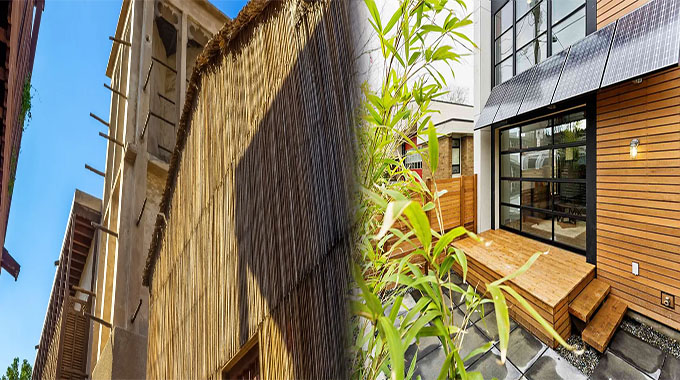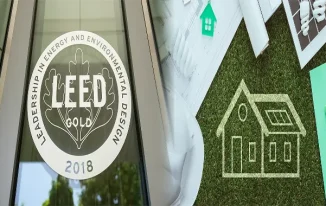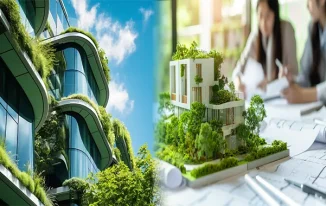If you’re an eco-conscious homeowner or building contractor, you might be interested in these earth-friendly, sustainable building materials. They can help improve energy efficiency and reduce waste. Some of them have even been shown to last longer than conventional materials like wood, which means fewer repairs and replacements will be needed over time—and that translates into lower costs!
Straw
Straw is a renewable resource, and it’s biodegradable. Straw is also an excellent insulator and can be used as building materials or to increase the insulation levels of your home.
Straw has many benefits: it’s light and easy to transport, it comes in many different sizes, and you can use it for various purposes such as insulation or animal bedding.
Hemp
Hemp is a sustainable building material that can be used for many different purposes. It’s also an excellent insulator, making it an ideal choice for people who want to reduce their carbon footprint. Hemp is a renewable resource, meaning that it will grow back year after year without needing to be replanted or fertilized!
Hemp has been used as an insulator since ancient times, when it was discovered that hemp leaves could be soaked in water and applied directly onto walls as a form of insulation against heat loss during winter months. In fact, this method has been used by many cultures all over the world throughout history–it’s only recently that we’ve forgotten about this amazing eco-friendly technique!
Bamboo
Bamboo is a renewable resource, which means that it can be grown in many climates. Bamboo grows quickly and requires less water than other trees. It’s also eco-friendly because it doesn’t require pesticides or fertilizers to grow properly. Because of these factors, bamboo makes an excellent building material for homes and buildings alike.
Bamboo is also extremely strong; it’s been known to support up to 1,000 pounds per square inch (psi) of pressure! This makes bamboo an excellent insulator against heat loss during cold weather months when you need extra warmth from your furnace or heater. In fact, one study found that using bamboo instead of wood resulted in a 50% reduction in energy consumption–which means you’ll save money on your utility bills month after month!
Cork
Cork is a renewable resource, which means it can be harvested without harming the environment. It’s also biodegradable and lightweight, so you don’t have to worry about it adding too much weight to your home. Cork tiles are fire-resistant and waterproof, so they won’t burn or leak water into your home if there is an accident (or even if you forget about them for a few years).
Cork is insulative as well–it keeps heat inside during the winter months and keeps cool air out during summer months–so this eco-friendly material will help lower your energy bills while making sure everyone stays comfortable year round! If that weren’t enough, cork has excellent soundproofing properties; this means that when people walk around on top of these floors they won’t disturb those underneath at all!
Wood pulp composites
Wood pulp composites are made from recycled paper and wood fibers. They’re very strong and durable, and can be used for a variety of applications. Wood pulp composites are also lightweight, easy to install and come in a variety of colors.
Lime cement boards
Lime cement boards are made by combining lime, which is a naturally occurring mineral, and Portland cement. Lime cement has been around since the 1800s and has been used to make everything from concrete to mortar. It’s considered a green building material because it doesn’t contain any harmful chemicals or toxins that pollute our environment like other materials do.
Lime cement boards are stronger than plywood or particleboard, making them an ideal replacement for these products in many applications such as flooring, roofing and siding–even though they’re more expensive than their traditional counterparts! They’re also recyclable at the end of their lifespan (around 50 years), which means that when you decide it’s time for new flooring or siding again down the road your old product won’t end up in landfills but can be reused instead by someone else who needs it more than you do right now.”
Clay-based plasters and renders.
Clay-based plasters and renders are a sustainable alternative to cement, made from natural materials that can be easily recycled. They’re also eco-friendly, reducing carbon emissions in the construction process. Clay plasters are lightweight and easy to apply, making them ideal for internal and external walls alike.
There are many earth-friendly building materials that are sustainable and help keep down costs.
There are many earth-friendly building materials that are sustainable and help keep down costs.
- Sustainable building materials are good for the environment. They don’t pollute or deplete the natural resources of our planet, so they’ll be around longer than non-sustainable ones.
- Sustainable building materials are good for your wallet. The cost of using these products is often less than using traditional construction methods, which means you’ll save money over time in terms of both energy usage and maintenance costs (which can add up quickly).
- Sustainable building materials are good for your health because they don’t contain harmful chemicals like formaldehyde or asbestos–two substances commonly found in old houses that have been linked to respiratory problems such as lung cancer or mesothelioma , respectively . It’s also important to note that some non-biodegradable products release toxins into soil when disposed of improperly; therefore it makes sense from an environmental standpoint not just financially but also socially too!
As you can see, there are many earth-friendly building materials that are sustainable and help keep down costs. Some of these include straw, hemp, bamboo and cork. These materials are all renewable resources that can be grown on a large scale without harming the environment. They also have low impact during production processes such as harvesting or manufacturing which makes them suitable for use in construction projects around the world!














